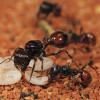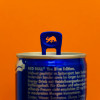WHO: 13 early coronavirus variants in Wuhan
Interview with
The WHO team dispatched to China to investigate the origins of the coronavirus pandemic have published their results. They set out four possible scenarios to account for the emergence of Covid-19: a jump of a bat virus into humans, a jump of a bat virus into another animal and then into humans, an escape from a lab, and then - somewhat bizarrely - the possibility that frozen food imported to China brought the virus with it. They think the second one, involving an intermediate animal, is most likely. And despite significant gaps in the investigation, the team did uncover some interesting findings: by the time China’s government reported the outbreak to the WHO in January last year, there were already more than 13 different variants of the virus circulating in Wuhan. Columbia University infectious diseases epidemiologist Maureen Miller discussed the implications with Chris Smith...
Maureen - It was widespread in Wuhan in December, so likely started one month, two months earlier, even longer than that. And the spillover probably didn't happen necessarily in Wuhan; it happened where the bats are circulating that have these viruses. Anywhere along that wildlife trade route, the spillover could have occurred.
Chris - Not everyone is completely convinced by this report though, are they? Senior people in the US have said that they just don't believe it. And part of the reason why they're saying that is if you look at the itinerary for the WHO's visit, they spent less than an hour in the market, which was at the centre of all of this at the start of it; they spent just a handful of hours in the Wuhan Institute of Virology. How can they realistically form opinions and gather enough data to make a sound judgment with such a whistle-stop tour, and with their visit being completely marshalled and controlled by Chinese authorities?
Maureen - I think a lot of information was not shared. And even the information that was shared, there was no connecting of the dots by the WHO scientists. 13 different strains were found in Wuhan in December. That suggests that there was so much transmission going on, that they likely have done research and they have not shared those results.
Chris - Yes, indeed, because I understand that the team requested blood samples; they also requested stored sewage samples from the Chinese authorities, which were backdated; and these sorts of samples are kept. I mean, I help to run a virology laboratory; we keep samples for up to 10 years in freezers, especially if we've got cases we're uncertain about. The Chinese authorities say that samples that have been requested have mysteriously disappeared, and have refused to provide them. That doesn't sound like transparency to me.
Maureen - Absolutely not. And I agree with you, there are probably lots of samples around the country that could be helpful. There are several large AIDS hospitals that collect samples forever.
Chris - So why are they not volunteering them then? They're not really helping their case, are they?
Maureen - They are not. What we can hold against China is everything they've done since after they discovered the virus. They were late in reporting; they did share the sequence, and there was one or two studies published in February; and since then, radio silence. There's nothing. It's going to be hard enough to identify the origins of this pandemic, but they have just made it so much harder because they don't want it to be in China. Yet the probability is enormous that it originated in China.
Chris - But the Chinese could be proactive now, couldn't they? And they could say, "this has happened. We can help you, let's get together. Let's find out how this has happened." Because at the end of the day, the source is still out there. It could continue to seed viruses or variants of the virus back into the human race, and it could cause history to repeat itself all over again. And they do seem to be incredibly resistant to doing this. And it's not just this time; they did it 20 years ago with the original SARS, didn't they? So why are they doing this?
Maureen - Political reasons. Nobody wants to acknowledge that a virus that has infected over a hundred million people - that we know about - nobody wants to be responsible for that. And China in particular, as they have emerged as a political and economic powerhouse globally, this would undermine the idea that they're in charge of their own destiny. I think it's foolish because I think in the long run, people would understand that they were not responsible for the spillover, but they will hold it against China until they come clean and provide some data and information. I'm sure they have a lot more information than they're willing to share, which is how they can be so selective in choosing what they share. I mean, frankly, I'm surprised that they got as much data as they did on this trip. The 13 variants that were in Wuhan in December: it doesn't take much to connect those dots. It had been circulating widely. So they've admitted publicly that it was circulating widely in Wuhan in December. And the data suggests that it started much earlier, and it was much more widely circulating.
Chris - Why has the lab escape theory been so emphatically and promptly dismissed, given that they did spend less than half a day in that facility? And actually it does remain a plausible possibility? Because the WHO team have kept it on their list...
Maureen - Yes. Plausible, but again, extremely unlikely. They are a world-class lab, BSL-4, monitored closely and tightly to follow regulations. It is extremely unlikely that it happened. Frankly, people are terrified of the viruses they work with, so they don't want to become infected or to be the cause of infection to others.










Comments
Add a comment